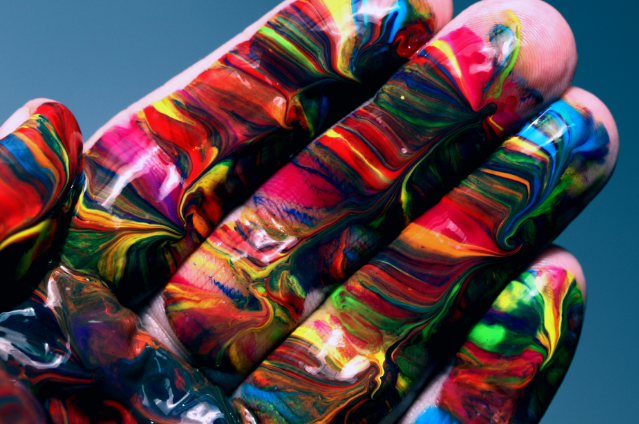
Photo by Alexander Grey on Unsplash
Art in its true essence is the reflection of man's truest desires and his perception of life. The abstract portrayal of his innate compass of emotions unleashes his greatest creations. The expression of self pours itself in the form of sculptures, portraits, drawings, music, graffiti, poetry, and writings. The exemplar of the beauty of nature lies in the creativity dwelling its abode in the creator's mind that captures its essence one masterpiece at a time.
Culture is known to be the intersection of linguistic, artistic, and religious beliefs that a particular person identifies himself with. Culture in its roots brings the spirit of a community that holds its ethnic spirits akin and alive for centuries to come. Art in its diversity forges itself into different variations that behold the intrinsic value of the culture and ethnicity it represents. In this article we talk about the intersection of art and culture, examining how art can transform the nuances of society and mold the meaning of creativity as a means for creating a social reform in the society.
Assertive Representation of Art in it's Originality
In the art industry, representation is a crucial topic, and many artists have challenged prevailing narratives and pushed for increased representation of marginalized voices through their work. The absence of representation of marginalized cultures in mainstream art shows can exacerbate emotions of isolation and marginalization. It is impossible to overestimate the importance of art in giving marginalized voices a platform.
Through their work, artists may represent and elevate underrepresented perspectives and frequently raise attention to situations that the general public has chosen to ignore or neglect. Marginalized artists can share their thoughts and have their voices heard by a larger audience by exhibiting their work at art exhibitions.
To be the voice of social change- A challenge to curate the air of revolution.
Displaying the work of marginalized artists who have faced underrepresentation in their tenure openly in public exhibitions and fairs is a responsibility of utmost scrutiny and care as the factors of interest, audience, demographic preferences, and optimum representation come into the picture. Though the art of social reform is appreciated, the presence of the right intent to shed light on their talent is highly required.
The sanguine balance between the institution, artists, and audience in promoting social reform lies in the hands of the curator. To create harmony amongst the masses, discretion needs to be maintained.
Making sure a variety of voices are heard is one difficulty. This can be especially challenging when discussing touchy subjects like socioeconomic class, gender, race, and sexual orientation. Curators must make sure that different viewpoints are represented and that these viewpoints are done in a considerate and polite way.
Finding a balance between the objectives of advancing social justice and giving viewers a fun and approachable experience is another difficulty. Curators have a responsibility to make sure that art shows provoke audiences to think about social justice and marginalized communities in addition to being interesting and educational.
The celebration of marginalized artists in their true essence- Examples of events that enunciate the need for social reformation.
Many social events and art exhibitions have initiated the inclusion of marginalized artists who display their ethnic and culturally diverse masterpieces in their exemplars at these fairs. Proper representation of these artists stirs the dialogue for discussion on topics that were previously brushed underneath the carpet.
Here are certain exhibitions that promote marginalized artists
- Primary Structures
The exhibition "Primary Structures" was the first to present Minimalism to an American audience before its official name. Exhibiting the works of influential American and British artists like as Robert Morris, Tony Smith, Gerald Laing, Carl Andre, Donald Judd, and Sol LeWitt, the show included an abundance of large-scale geometric conceptual abstraction in sculpture. The display was a critical and media success, and the artist Mark di Suvero dubbed it "the key show of the 1960s."
It gave rise to a completely new visual language in Western art history and popularised the notion of the artist as a designer as opposed to a craftsman. However, as Jens Hoffmann's 2014 revamp makes clear, the performers on the program were all white men. In 1966, it was. Furthermore, Kynaston McShine should be noted as African American. - The Whitney Museum of American Art in New York hosted by the Whitney Biennial 2019: This show addressed topics including immigration, climate change, and police brutality while showcasing a wide variety of performers.
- The Hammer Museum in Los Angeles is hosting "Radical Women: Latin American Art, 1960–1985." During a time of major social and political change in the region, this exhibition showcased the work of female Latin American artists.
The future of marginalized artists and social justice
As the world climbs the ladder of revolution, it embraces the presence of technology and digitalization. The future of social reform lies in the promotion of marginalized voices in mainstream social media and virtual platforms Another way of fair representation could be the inclusion of trodden voices in the major sources of entertainment and mainstream artistic displays. Furthermore, collaborating and forming alliances with underrepresented groups helps guarantee that exhibitions are more inclusive and considerate of a range of viewpoints.
Art exhibitions can significantly influence social movements and advance social justice as the world changes. All people can live in a more just and equitable world if we prioritize representation and provide a voice to those who are marginalized.
Conclusion
Exhibitions of art have the ability to advance social justice and provide a voice to underrepresented groups that have traditionally been ignored in popular culture. It is critical to place a high priority on representation and make sure that art exhibitions function as a platform for social change as curators and institutions continue to wrestle with these problems.
